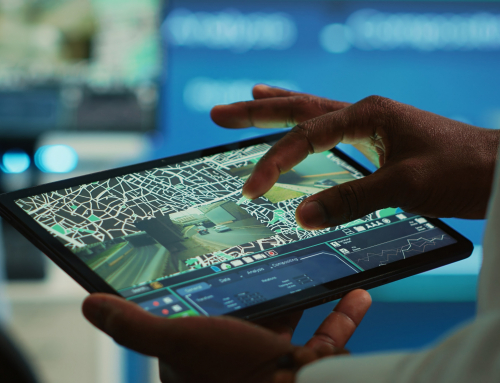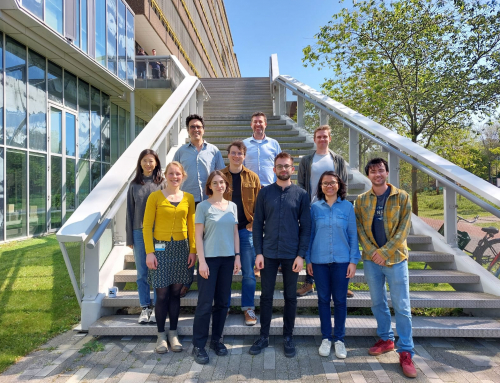Iwona Kudłacik – a PhD student from UPWr did a hybrid training in Sapienza in July 2021. Her collaboration with Sapienza university was partly performed on-line. Despite the pandemic she managed to visit Rome for one month to complete the training in person.
In the following report, she talks about the work of Sapienza university and also presents the collaboration with GATHERS project:
‘My Early-Stage Researcher’s training in GNSS seismology took place in the Geodesy and Geomatics Division of the Sapienza University of Rome, which is in top 200 in all Academic Rankings of World Universities. The internship was 3-months long. I collaborated with the team of specialists of GNSS for seismic hazard – prof. Mattia Crespi, prof. Augusto Mazzoni, Marco Fortunato and Michaela Ravanelli. This team develops an un-standard approach to derive short-term displacements from GNSS observations, named VADASE (Variometric Approach for Displacements Analysis Stand-alone Engine). The short-term positions are registered with high-rate GNSS observations with sampling over 1 Hz, usually, 10-100 Hz and the observations are processed in kinematic mode. The name VADASE comes from Italian words “va da sé”, which means “go by itself” and as I learnt, indeed it almost is – some geodetic knowledge is also needed to operate it… The authors of VADASE meant to keep the processing as simple as possible and their approach is based on epoch-by-epoch velocity estimation from time single-difference of phase observations between consecutive epochs (Colosimo et al., 2011) and is being applied to monitoring deformations during strong and moderate natural earthquakes (eg. Colosimo et al., 2017) and the ionospheric perturbations following seismic events (eg. Ravanelli et al., 2021).
Our joint work is an expansion of my current research work focused on mining tremors monitoring with high-rate GNSS observations (Kudłacik et al., 2019; Kudłacik et al., 2021). The mining tremors are shallow earthquakes of magnitude usually under 4. My internship was mainly dedicated to gain of skills of performing calculations with variometric approach, apply VADASE into mining tremor analysis, and improve the methodology of noise reduction. The final goal was the common publication of the results in one of the leading journals in the field of GNSS-observation processing and timeseries analysis, which will be ready soon. We revealed a great consistency of detecting an earthquake between results of different GNSS approaches and seismic records. The joint work began with establishing the state of art in the subject of GNSS-seismology for mining tremors by a trainee and the basics of the variometric approach by prof. Crespi on an online seminar. Next, the training contained a series of online and in-person consultations with the Host institution representatives. The results of our cooperation are fruitful and during multiple meetings, other side scientific topics of potential cooperation and mutual development of cooperation also appeared. Of course, man does not live by science alone, so it could not get by with delicious Italian food, as well as visiting Rome in the spare time.’
References:
Colosimo, G., Benedetti, E., Branzanti, Savastano, G., Fratarcangeli, F., Ravanelli, M., Mazzoni, A., Verkhoglyadova, O., Komjathy, A., & Crespi, M. (2017). The Variometric Approach to GNSS Seismology from Concept to Applications. October.
Colosimo, G., Crespi, M., & Mazzoni, A. (2011). Real-time GPS seismology with a stand-alone receiver: A preliminary feasibility demonstration. Journal of Geophysical Research: Solid Earth, 116(11). https://doi.org/10.1029/2010JB007941
Kudłacik, I., Kapłon, J., Bosy, J., & Lizurek, G. (2019). Seismic phenomena in the light of high-rate gps precise point positioning results. Acta Geodynamica et Geomaterialia, 16(1), 99–112. https://doi.org/10.13168/AGG.2019.0008
Kudłacik, I., Kapłon, J., Lizurek, G., Crespi, M., & Kurpiński, G. (2021). High-rate GPS positioning for tracing anthropogenic seismic activity: The 29 January 2019 mining tremor in Legnica- Głogów Copper District, Poland. Measurement: Journal of the International Measurement Confederation, 168(September 2020), 1–9. https://doi.org/10.1016/j.measurement.2020.108396
Ravanelli, M., Occhipinti, G., Savastano, G., Komjathy, A., Shume, E. B., & Crespi, M. (2021). GNSS total variometric approach: first demonstration of a tool for real-time tsunami genesis estimation. Scientific Reports, 11(1), 1–12. https://doi.org/10.1038/s41598-021-82532-6





